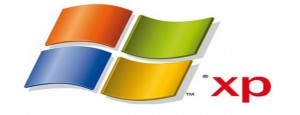Windows XP, which debuted nine years ago in 2001, will continue to be with us for most of the coming decade.
Microsoft (MSFT, Fortune 500) announced late Monday that it would allow some Windows 7 customers to buy Windows XP “downgrade” licenses until two years after the next version of Windows ships (see correction below.) Those licenses allow customers to swap out the newer operating system and instead install a legal copy of the older one.
Microsoft initially planned to let Windows 7 customers downgrade to Windows XP only through April 2010, but that end-date was quickly extended until October 2011. Now, the company says it will extend the downgrade option through the entire Windows 7 sales cycle and then two years after that. Windows sales cycles typically last anywhere between two and five years; Windows 7 went on sale in October 2009.
The move is intended to appease business customers, many of whom skipped an upgrade cycle by ignoring the widely panned Windows Vista.
Though the software giant said its customers are moving quickly to adopt the newest Windows version, it acknowledged that some still want the option to downgrade. A full 74% of Microsoft’s business customers are still using the outdated Windows XP, Windows marketing head Tami Reller said this week at Microsoft’s Worldwide Partner Conference in Washington, D.C.
“XP has survived in large part because of Vista, which was an unmitigated disaster,” said Daniel Ruby, research director at Chitika Inc. “Corporate IT departments are wary of doing anything until they’re sure things are going to work. They’re not willing to go from something that works to something that doesn’t work as well.”
Still, it’s unlikely that many customers will stick with Windows XP for too much longer: Microsoft’s support for the operating system is set to end in April 2014.
Ruby said he expects most large corporations to migrate to Windows 7 in 12 to 18 months. The operating system has been available for eight months, but companies typically wait more than a year before adopting a new Windows release, he said.
0:00 /1:29Ballmer on Windows 7 for mobile
In the meantime, Microsoft said corporate demand for new computers that can run XP remains high. “Our business customers have told us that the removing [of] end-user downgrade rights to Windows XP Professional could be confusing,” Microsoft said in a company blog post.
That’s because sticking with an October 2011 downgrade-to-XP deadline would have forced corporate IT departments to migrate by then or deal with a mishmash of operating systems and licenses. While PCs purchased before October 2011 with Windows 7 preinstalled would be able to be downgraded to Windows XP, new machines bought after that date would not legally be able to run the aging software.
Confusing matters even more, Windows Vista customers are allowed to downgrade to Windows XP anytime they want, with no deadline. So if a company wanted to run Windows XP and bought some computers before Windows 7 debuted, some computers before October 2011, and some computers after that date, it would have to keep track of three different license agreements with Microsoft.
“Managing a hybrid environment with PCs that have different end-user rights based on date of purchase would be challenging to track,” Microsoft said in the blog. “This will help maintain consistency for downgrade rights throughout the Windows 7 lifecycle.”
Only customers that bought the Windows 7 Professional or Ultimate versions are eligible for the downgrade to Windows XP Professional.
The change also only affects companies that don’t subscribe to Microsoft’s volume licensing or Software Assurance programs. Those buying arrangements, popular with large companies, allow IT departments to go almost Paleolithic with their systems: Those customers can install any Windows version dating all the way back to Windows 95.






A large proportion of UK PCs are run and organised by a Microsoft Windows edition. Point of Sale Systems (Pos)
I use Win XP Professional for my PC,…its a bad news if Microsoft will cut XP off 🙁
I am also writing to make you be aware of what a awesome discovery our girl gained studying your web site. She figured out numerous details, most notably how it is like to have an excellent teaching spirit to have many others completely completely grasp specific hard to do issues. You truly did more than visitors’ expected results. Thank you for delivering those informative, trusted, educational and in addition easy thoughts on your topic to Tanya.